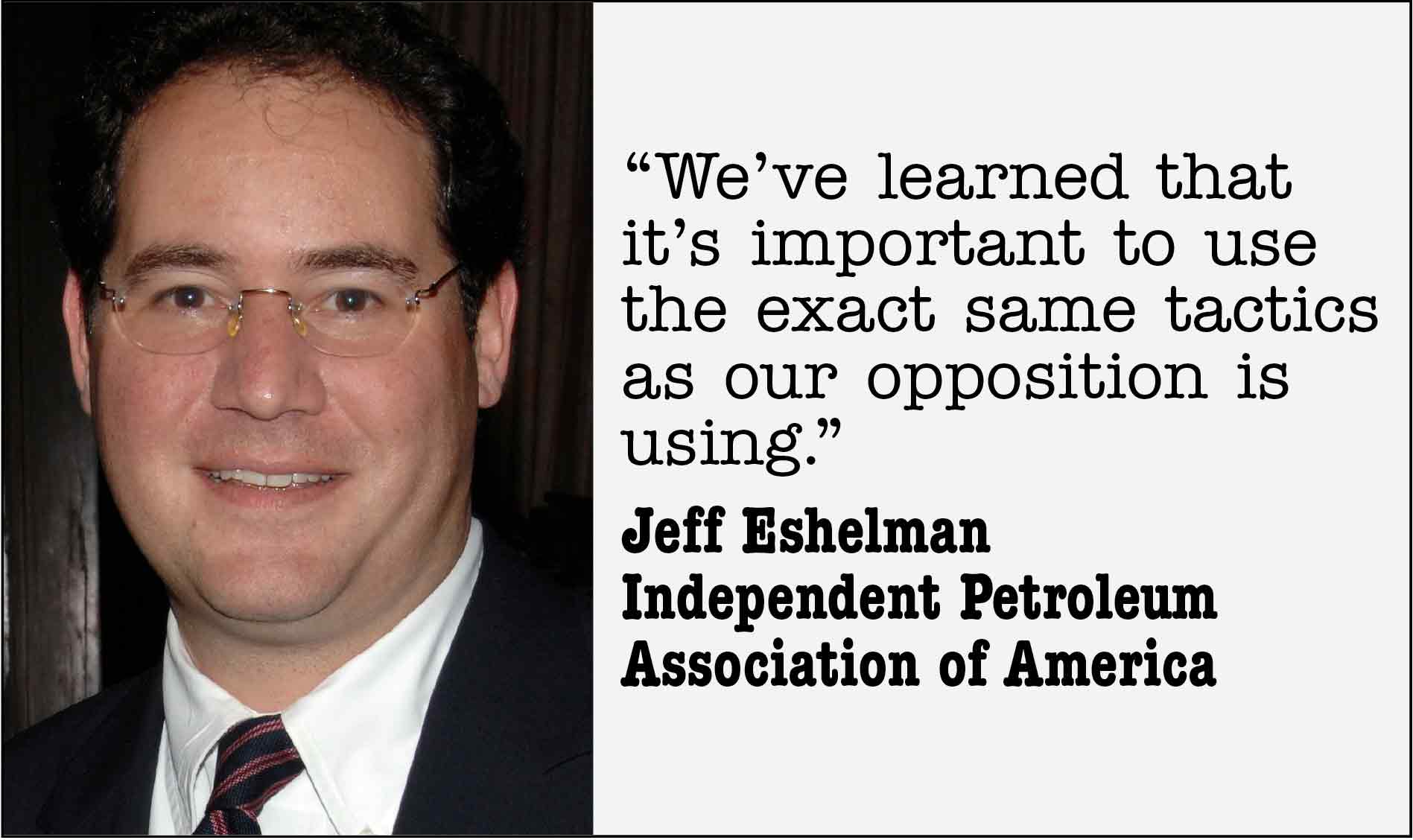If you’re a movie buff, you may have seen a trailer for Promised Land, which stars Matt Damon as a gas-company salesman who leases natural gas drilling rights in Pennsylvania. While this movie about “fracking”—the controversial technique to mine natural gas from shale deposits—isn’t set to open until Dec. 28, communicators on both sides of the fracking issue aren’t sitting on their hands.
The Independent Petroleum Association of America (IPAA), which represents energy producers, firmly believes the movie will stand on the side of anti-fracking advocates, so they are tackling the issue head-on, sending movie reviewers scientific data on fracking, passing out leaflets to moviegoers and launching a social campaign on Twitter and Facebook.
 |
The group’s message? We understand your concerns,” says Jeff Eshelman, VP, public affairs and communications at IPAA. “We want you to understand facts, and that we can do this type of drilling in an environmentally safe way.”
The IPAA’s current communications strategies around the release of Promise Land reflect a sea change in public affairs and issues-based PR. Eshelman, who started out in political communications, says that in the last decade issue advocacy and communications were Washington-centric. “We’d put out a press release, visit editorial boards and build coalitions,” he says.
But in the past few years that’s all changed—particularly within the oil industry. Eshelman began to study what IPAA opponents were doing. They had websites with the most current news, contact information and instructions on how to field a petition,” he says. Plus they were utilizing Twitter and YouTube. Activists began going into local communities to spread their messages. The fight was no longer legislative, but community based.
In response, the IPAA launched energyindepth.org, the hub of the organization’s “truth campaign,” as Eshelman terms it. And that explains the Twitter and Facebook activity.
“We’ve learned that it’s important to use the exact same tactics as our opposition is using,” says Eshelman.
IT’S THE MESSAGE
But while digital and social media may have changed how audiences are reached, one thing remains constant: The messaging has to be spot on. For example, to make Washington state the seventh state in the U.S. to legalize civil marriage for same-sex couples, Nyhus Communications implemented a full-scale campaign on behalf of the Washington United For Marriage coalition, including PR, marketing, social media and media relations. But it was the framing of the message that made the campaign a success, says Roger Nyhus, CEO of the Seattle-based agency.
“We tried to make marriage equality a nonpartisan issue, and not a civil rights issue as it’s been framed in the past,” says Nyhus. Focus groups, polling and research of messages that have resonated in other states helped Nyhus zero in on the universal message of “love” to get its client’s point across.
The messaging worked. After the coalition’s launch, positive national, regional and local media coverage helped prompt Gov. Christine Gregoire to introduce a marriage equality bill, and the state legislature passed the bill into law.
“What is astonishing was that we caught the opposition off guard,” says Nyhus. “They didn’t expect us to come out so strong and with an effective message.” Getting out of the gate strong is one piece of advice from Nyhus on effective issues PR. More tips include:
1. Start with a strategy. Don’t turn to tactics right away. “Our goal was to launch the marriage initiative,” says Nyhus. “It wasn’t going to be a long-term campaign.”
2. Messaging, messaging, messaging. Find out what messages resonate. It should be backed up by data—surveys, focus groups and the strategies of other campaigns.
3. Have an integrated approach. Think of elements holistically. How do these pieces fit? Re-purpose content, and deploy videos and images across channels.
4. Be nimble. If things don’t go the way you expect, be ready to change your approach.
SWAYING THE MEDIA
.jpg) |
Issues PR isn’t just about reaching the public. A big piece of any integrated issues campaign is media relations. Karen Hinton, leader of Washington D.C.-based Hinton Communications, knows full well the power of the press in her work on behalf of the people of Ecuador in a rainforest contamination case involving oil company Chevron.
To effectively get your side of an issue across to journalists, Hinton says experts are critical. “Everybody needs their expert,” says Hinton. “They essentially wash each other out, but each side has to have them.”
Then, it’s about fighting it out on the details. “Try to influence a reporter so that your side is high up in their story,” says Hinton.
DON’T BE BLINDED
While Eshelman says his organization has science on this side, Hinton cautions against injecting too much science into the story. “The science puts everyone to sleep,” she says. Of course, the IPAA is banking on science to sway the public toward the pro-fracking side.
Josh Fox, maker of the anti-fracking film Gasland, told The Wall Street Journal that the petroleum industry is wrong to practice PR around technical and engineering issues of fracking that can’t be solved. Eshelman is nonplussed. “Fox is great at PR, but not so good with the science,” he says. “We have to do well at both.”
In order to sway a concerned public, that’s exactly what has to be done.
CONTACT:
Jeff Eshelman, [email protected]; Roger Nyhus, [email protected]; Karen Hinton, [email protected].
Follow Scott Van Camp: @svancamp01
